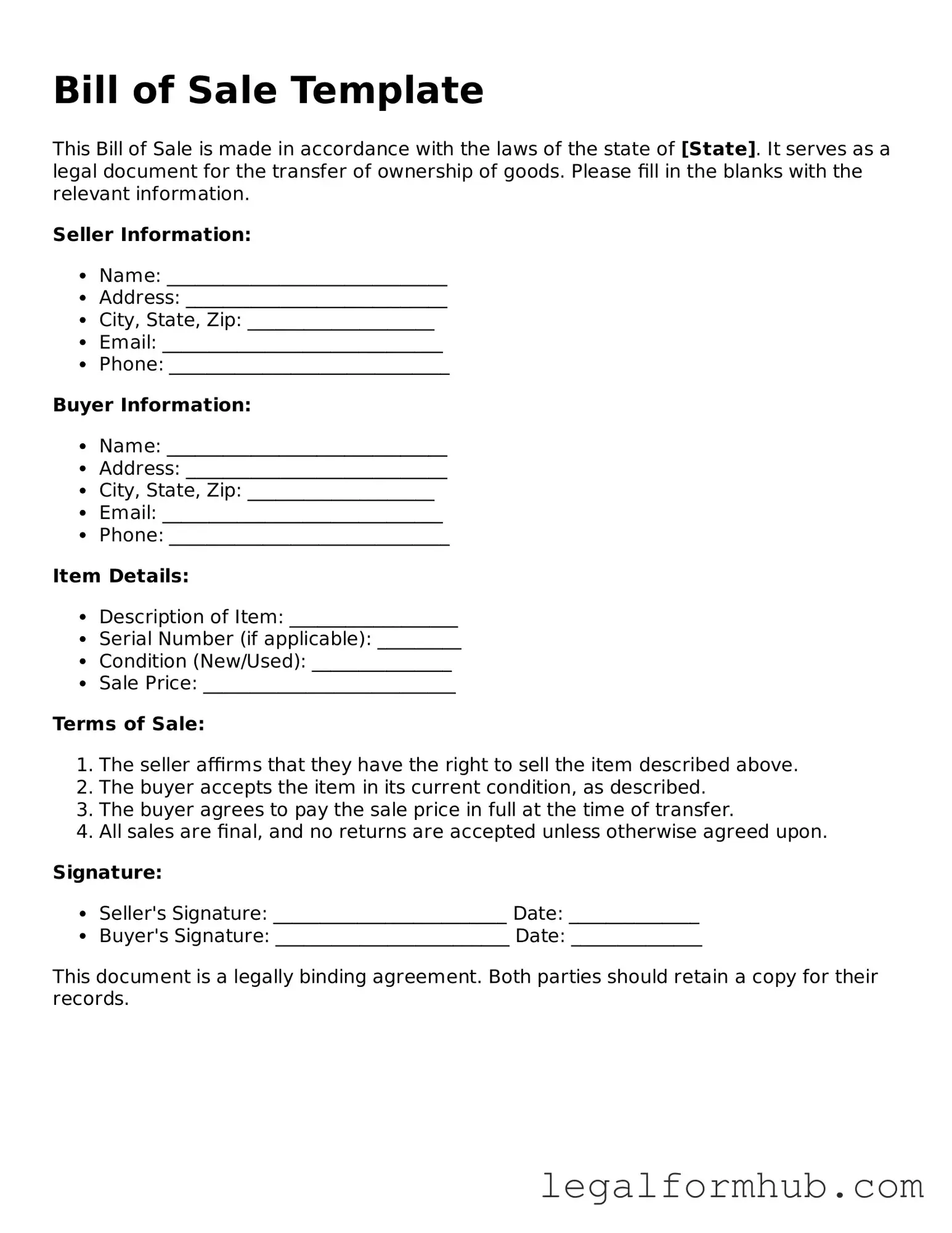The Bill of Sale is often compared to a receipt, which serves as proof of purchase for goods or services. Like a Bill of Sale, a receipt documents the transaction details, including the date, the items purchased, and the amount paid. However, a receipt is typically simpler and does not usually transfer ownership in the same way a Bill of Sale does. Instead, it confirms that a transaction occurred, serving as a record for both the buyer and seller.
The California Articles of Incorporation form is a crucial document that establishes a corporation in California. This legal form outlines essential details about the business, such as its name, purpose, and management structure. Filing this document with the California Secretary of State is the first step in creating a legally recognized entity, and you can find the necessary documentation at Free Business Forms.
Another document similar to a Bill of Sale is a purchase agreement. This more comprehensive document outlines the terms and conditions of a sale, including payment details, warranties, and contingencies. While a Bill of Sale finalizes the transaction and confirms ownership transfer, a purchase agreement often precedes it, laying the groundwork for the sale and ensuring both parties understand their obligations.
A lease agreement shares similarities with a Bill of Sale, particularly in the context of personal property. Both documents outline the terms of use and ownership rights. However, a lease agreement typically allows for temporary possession of the property without transferring ownership. In contrast, a Bill of Sale signifies a permanent transfer of ownership from the seller to the buyer.
The title transfer document is another important paper akin to a Bill of Sale, especially in vehicle transactions. A title transfer serves to officially change the registered owner of a vehicle. Like a Bill of Sale, it provides proof of ownership; however, it specifically deals with vehicles and includes details such as the vehicle identification number (VIN) and odometer reading, which are not typically included in a standard Bill of Sale.
Gift deeds also bear resemblance to a Bill of Sale, as they both facilitate the transfer of property. A gift deed is used when property is given without any exchange of money. While a Bill of Sale requires a purchase price to validate the transaction, a gift deed emphasizes the voluntary nature of the transfer, often with no expectation of compensation.
In the realm of real estate, a quitclaim deed is comparable to a Bill of Sale. This document transfers ownership rights from one party to another without making any guarantees about the property’s title. While a Bill of Sale confirms the sale of personal property, a quitclaim deed does the same for real property, albeit without the same level of assurance regarding the ownership's validity.
Another document that serves a similar purpose is a warranty deed. This legal instrument conveys real estate ownership and guarantees that the seller holds clear title to the property. Unlike a Bill of Sale, which is often used for personal property, a warranty deed is specific to real estate transactions and provides additional protection to the buyer through its guarantees.
Finally, a promissory note can be seen as related to a Bill of Sale when financing is involved in a purchase. A promissory note is a written promise to pay a specified amount of money at a certain time. In some cases, a Bill of Sale may accompany a promissory note, especially when the buyer is making payments over time for the purchased item, establishing a clear agreement between the parties involved.
